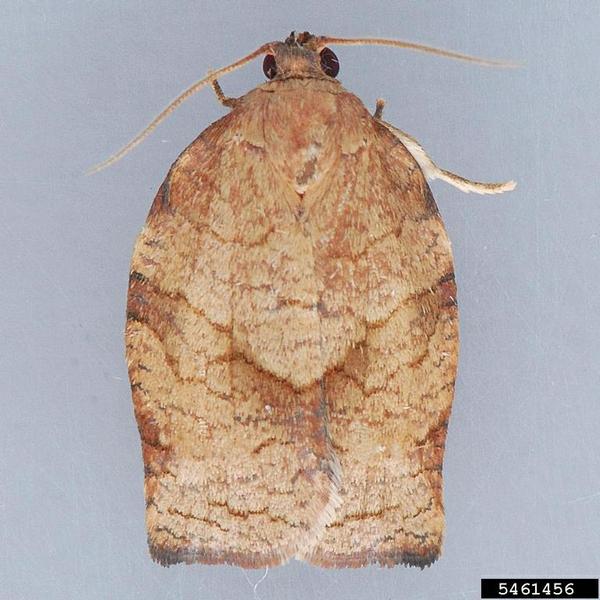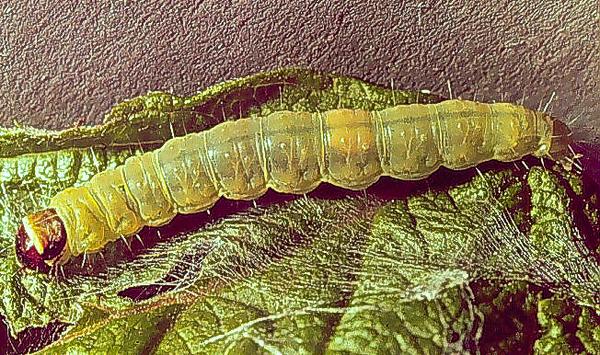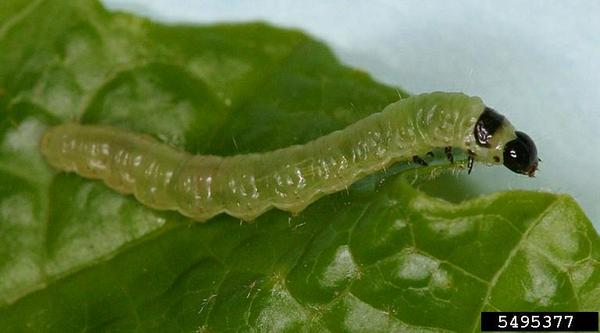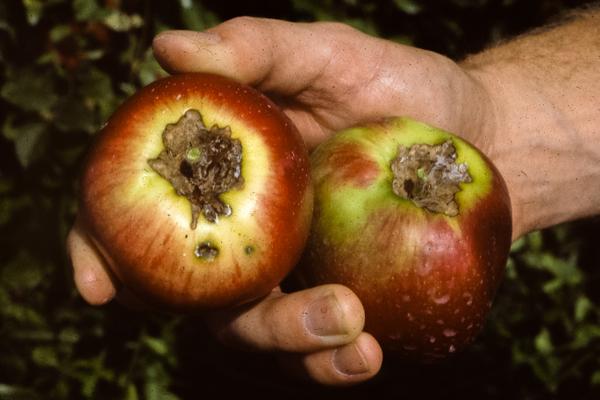Background and Description
Obliquebanded leafroller (Choristoneura rosaceana; OBLR) is a native tortricid moth that is widely distributed throughout the US and Canada, but it is not considered a major pest of apple in the Southeast. Where occasional high populations occur it can cause significant damage. OBLR feeds on several plants in the Rosaceae family and many other deciduous trees.
Adult OBLR are tan or brown moths with alternating light and dark bands on the front wings. Females are larger than males, with most adults ranging from 1/3 to 1/2 inch (9 to 12mm) long with wingspans of 3/4 to 1 inch (20 to 27mm). Larvae are 3/4 to 1 inch (20 to 25mm) long, green with black or brown head capsules, and eggs are laid in overlapping masses similar to those of redbanded leafroller, but larger - 3/16 to 1/3 inch (5 to 9mm) in diameter.
Life history
Partly developed OBLR larvae overwinter in cocoons under bark, becoming active around the time that buds open in the spring. They bore into the buds and may construct tubelike feeding chambers out of new leaves. As larvae mature, each will construct another tubular structure from a single large leaf, within which it will pupate. Adult moths appear 10 to 12 days later (usually by mid-May in North Carolina). This spring generation will deposit eggs on apple limbs and trunks within a few days, and first generation larvae hatch 10 to 12 days after that. They feed on fruit or foliage until they mature by the end of June, becoming adults by mid-July. Larvae from these adults feed primarily on foliage until they are approximately half-grown. In cooler areas, they go on to produce the hibernacula in which they spend the winter; in warmer areas they may mature and produce a third generation to overwinter.
Damage
Foliage feeding in spring can be severe if OBLR populations are high, resulting in reduced growth (particularly in young nonbearing trees). Fruit feeding is similar to that of redbanded leafroller, but usually much deeper. OBLR is generally not a major problem in NC and is usually controlled by insecticides that are already sprayed for more significant pests.
Monitoring and Control
Pheromone traps should be used to determine when moths are flying and if numbers are sufficient to warrant an insecticide application during the late flight period when eggs begin to hatch. Sprays applied for rosy apple aphid during pink stage can reduce damage caused by overwintering larvae. In some areas OBLR has developed resistance to standard insecticides and may be better controlled by biological agents.
See the "Pest and Orchard Management Program" section of the Integrated Orchard Management Guide for Commercial Apples in the Southeast for the most current control guidelines.
Publication date: Feb. 23, 2015
N.C. Cooperative Extension prohibits discrimination and harassment regardless of age, color, disability, family and marital status, gender identity, national origin, political beliefs, race, religion, sex (including pregnancy), sexual orientation and veteran status.





